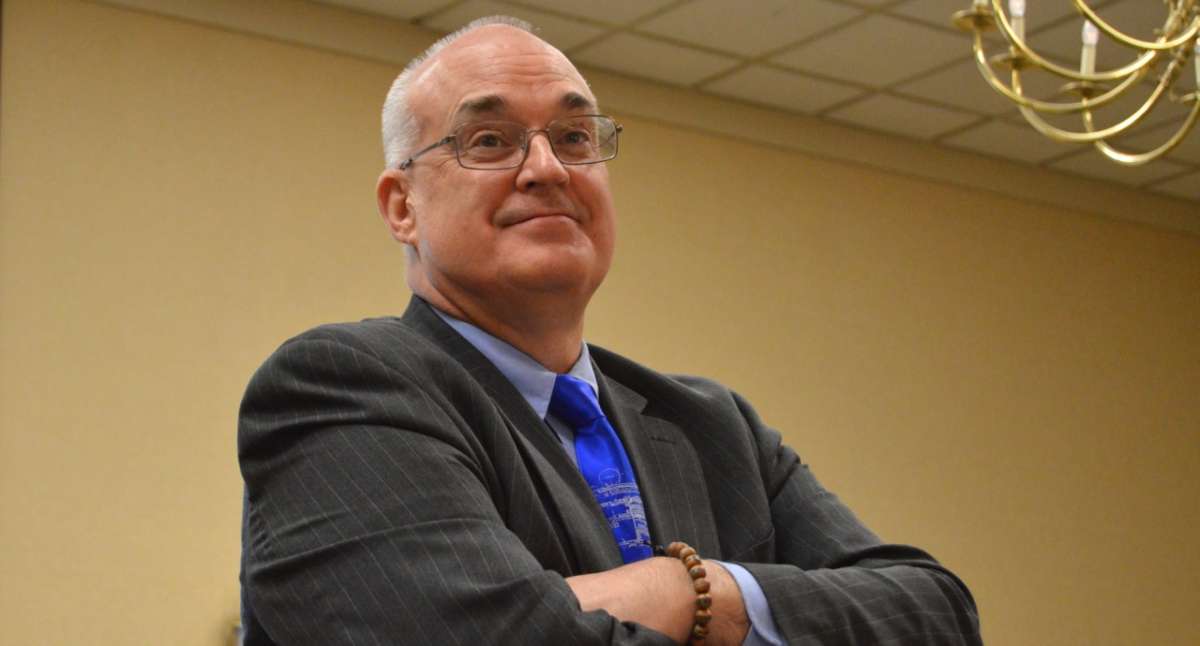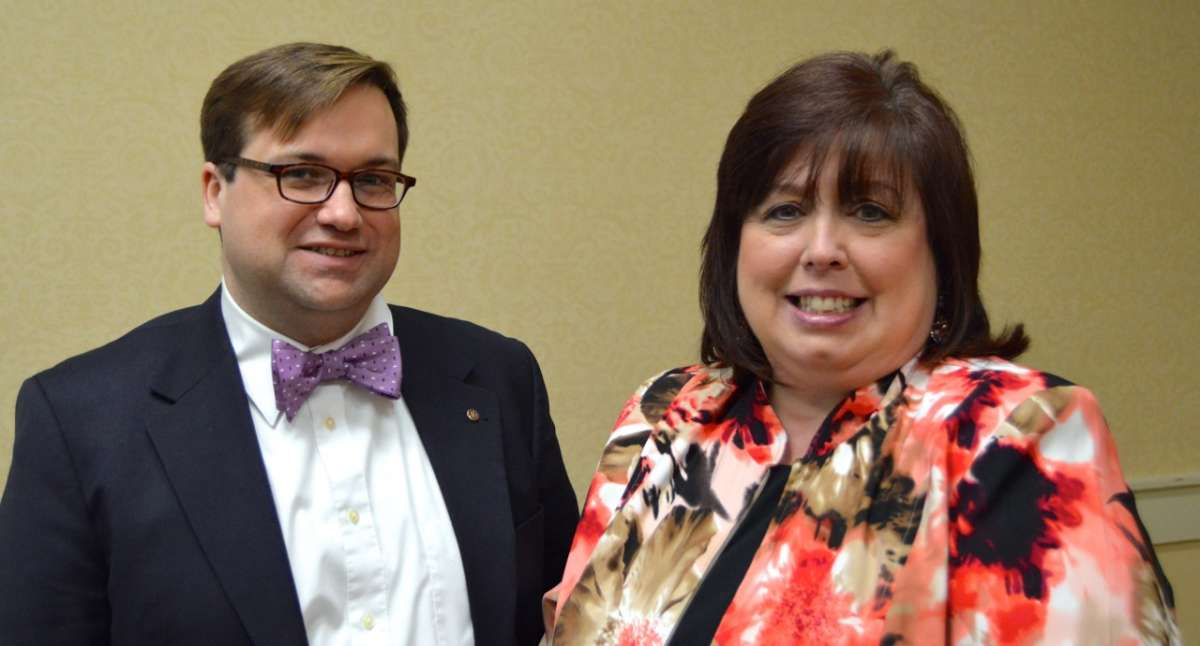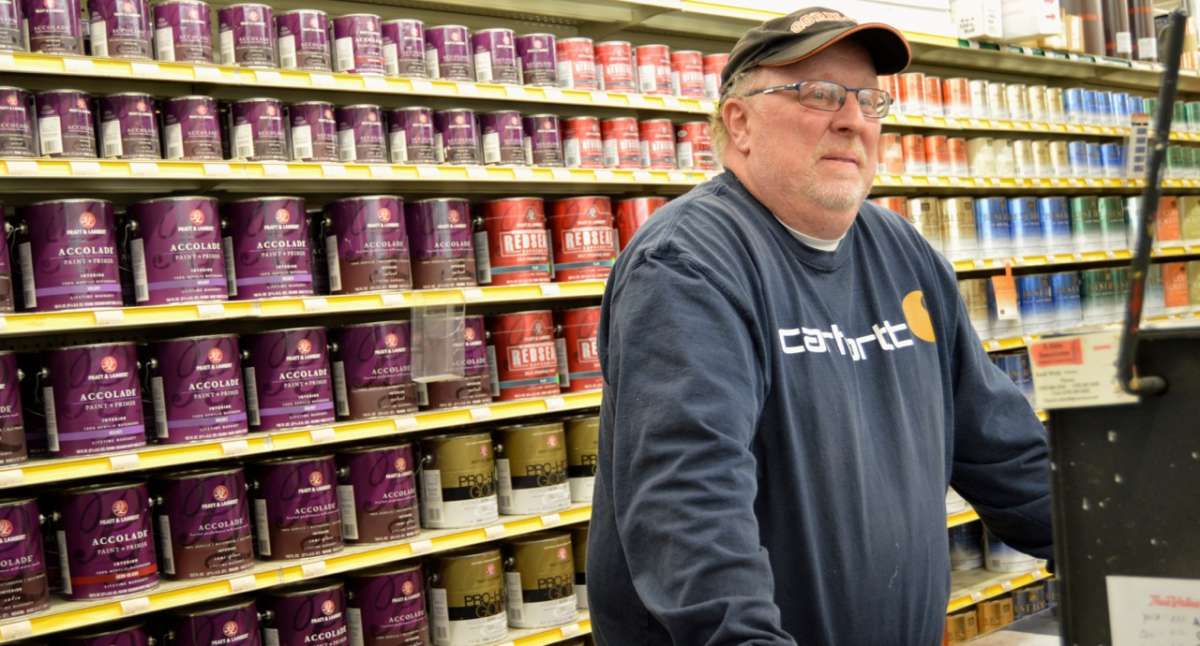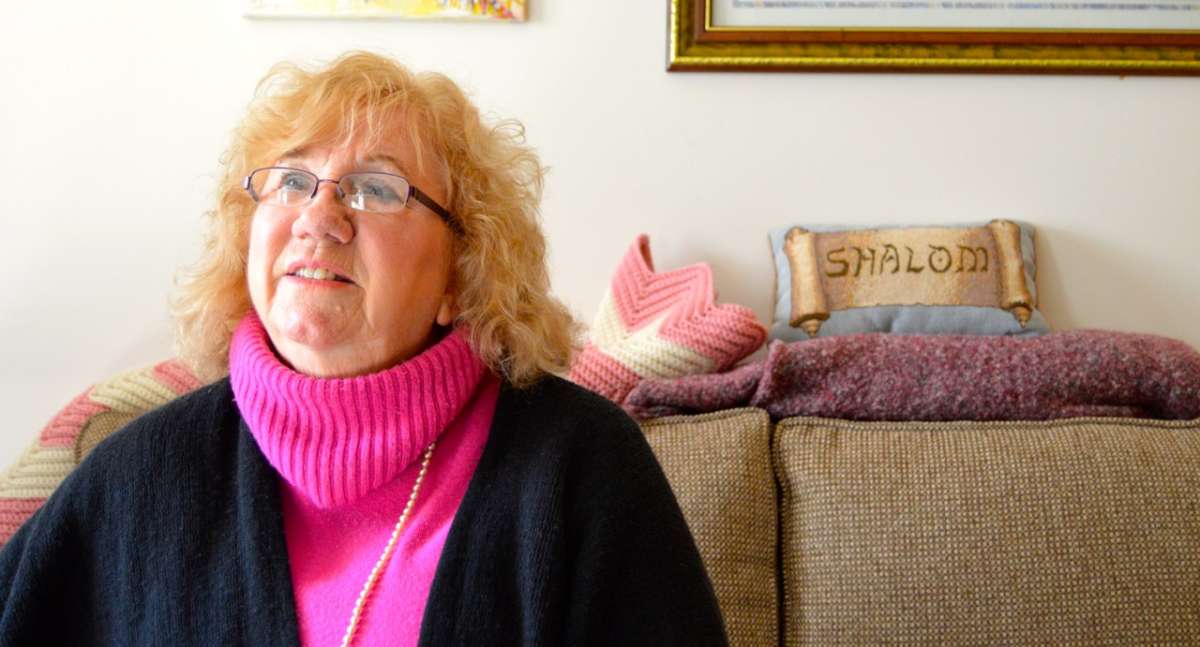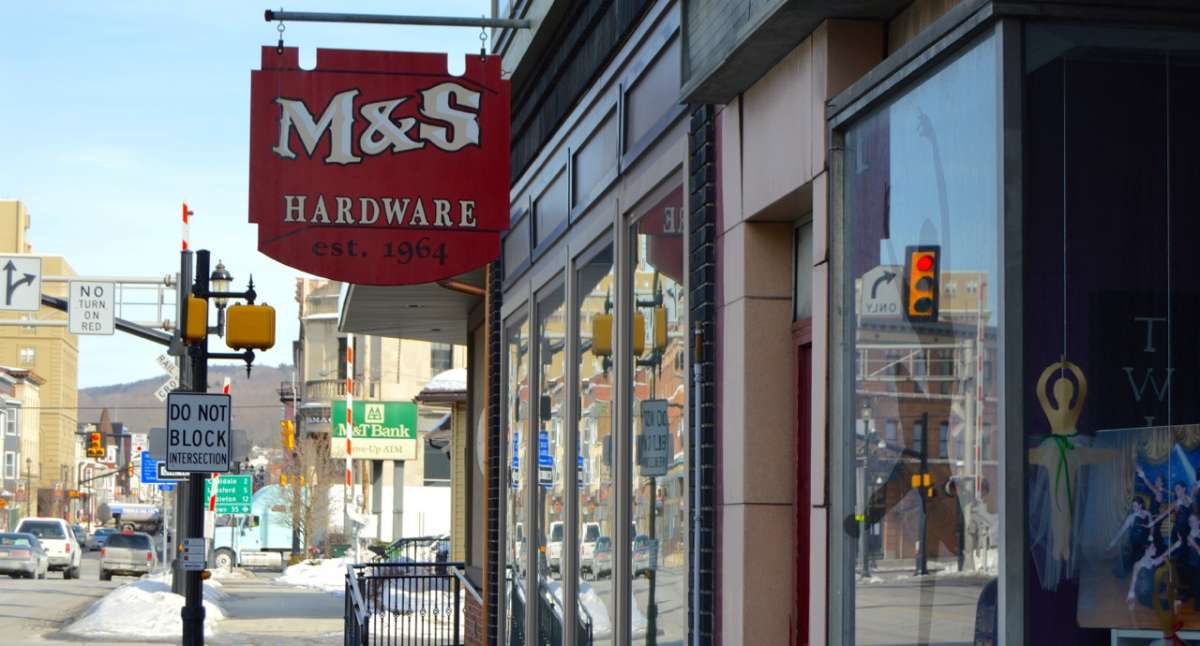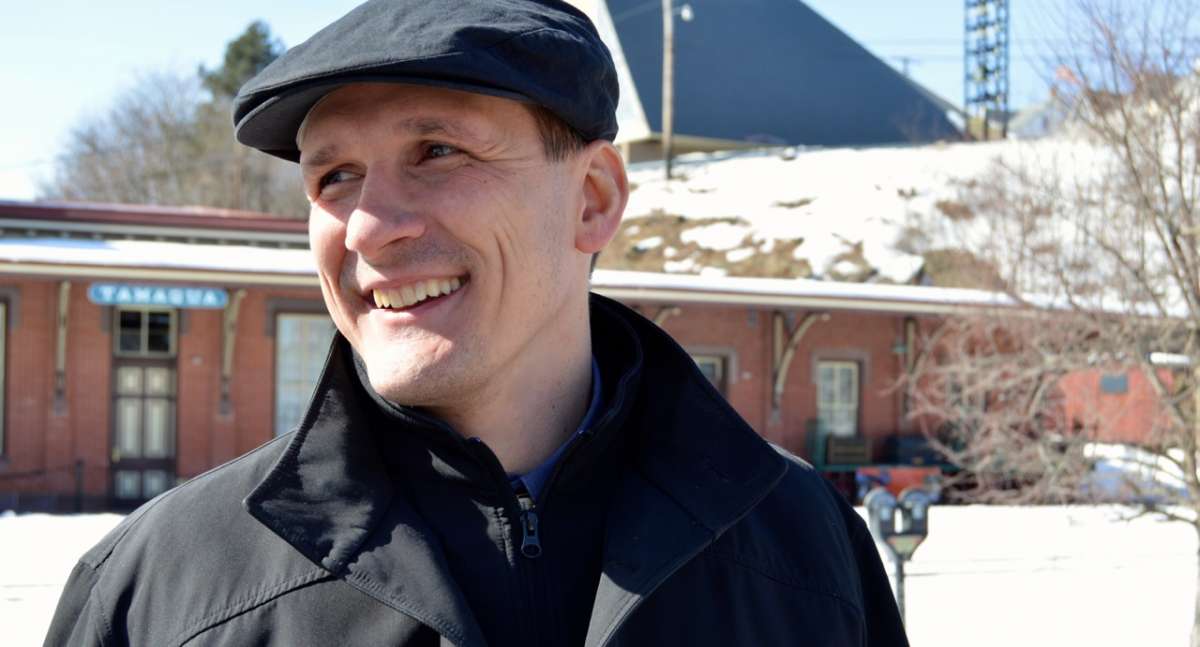Blueprint Communities program trains community leaders in the tough, long-term work of revitalization
ListenMore than ribbon-cutting… the Blueprint Communities initiative trains community leaders.
What does it take to turn a community around? Revitalization work is certainly more than just ribbon-cutting ceremonies. Every new bike path, main street project, or historic rehab likely represents stacks of paperwork and years of planning.
The Blueprint Communities initiative is designed to train leaders to do the tough, long-term work of revitalization. The training spans almost a year and includes sessions on everything from how to attract businesses and recruit volunteers, to how to write grant proposals. The ultimate goal is to create a strong “core team” of leadership and a long-term strategic plan.
“If you care about your community…”
At a hotel ballroom in State College, dozens of people are divided up into six areas — one representing each community taking part in the Blueprint program (Clarion, New Castle, Reynoldsville, Curwensville area, Huntingdon area, the Allegheny-Clarion Oil Region area). It’s graduation day, but also technically the last day of training, so the folks in attendance are still hard at work. The Clarion team is hovering over a schedule covering March to December—they’re coordinating their twice-monthly group meetings.
Clarion’s big picture goal is to make the town a tourist destination.
It’s a goal that will take meetings, paperwork and planning. Team member Dan Parker said the whole program has been more work than he expected.
“But,” he said, “it’s good work and it’s valuable work.” Tracy Becker added, “If you care about your community, those are the things you’ll have to do.”
Capacity building
“The Blueprint Communities is really, at its core, a community leadership capacity-building program, with the output being hopefully a community revitalization plan,” said Dave Buches.
Buches is the community investment manager at the Federal Home Loan Bank of Pittsburgh, which funds the initiative.
FHLB provides funding through member financial institutions in Pennsylvania, West Virginia, and Delaware for community development and affordable housing. Buches said the bank noticed many communities seeking funding lacked strong leadership and clear goals—thus the Blueprint program.
“All the training and the technical assistance and the coaching we provide is orienting towards building the capacity of the community to do quality community development,” Buches said. The bank requires communities to put together a committed team–including representatives from a FHLB member financial institution, local government, and a community-based organization—in order to take part in the program.
The first round of training launched in Pennsylvania in 2005, with 12 community participants. Since then, there have also been rounds of training in Delaware and West Virginia.
The bank puts in about $200,000 to $250,000 to fund each round of training. Buches said the return in investment—in terms of money invested into community revitalization as a result of the training—is at least ten-fold.
A master’s degree in paperwork
Perhaps the success of the program lies in how demanding it is.
Bill Fontana is executive director of Pennsylvania Downtown Center, the non-profit group contracted to run the trainings with support from Penn State University Extension and other consultants. He jokes the program is like a master’s degree in paperwork.
It’s a joke, but he’s making the point that participants learn skills similar to what city planners learn in graduate classes.
“We go into their communities, we sit down with them, we provide very specific training on organizational development or how to do streetscapes or recruit new businesses,” Fontana said. “So it’s a combination of both this kind of group training and then going in and dealing with the specific needs of the individual community.”
It’s an intense program—and Fontana emphasized it’s no quick fix. When he talks about community revitalization, he’s talking 10, 20, even 50 years down the road.
“Too often communities think that by sitting down and a couple of people getting together on Saturday morning at a Dunkin’ Donuts and talking about what they want to have happen over the next year is going to make that a reality,” he said.
The Blueprint initiative prepares community revitalizers for a long-term process.
“Buckle up your chin straps”
No one knows the meaning of “long-term” better than Micah Gursky.
Gursky is from Tamaqua, one of the 12 communities that took part in the first ever Blueprint Communities initaitive in 2005 (others include Hamburg, Tamaqua, McKeesport, Wilkinsburg and Waynesburg).
When asked if Gursky has any advice for this year’s graduates?
“Buckle up your chin-straps and get ready,” he said. “It’s a lot of work and it takes a long time and dedication. If you think it’s going to be quick and easy, you’re going to be sorely disappointed. But if you stick at it for the long haul, you can really change your community.”
It would be fair to say Tamaqua is a Blueprint Communities success story—the borough has made great strides in meeting the six goals it set as part of the training a decade ago. There have been some big wins—like a new arts center and some big building projects.
The Hazle Street and Liberty Hall Complexes are shining examples—what used to be blighted historic buildings are now multi-million dollar affordable housing complexes. Even better? Both were completely funded by tax credits and other outside sources.
“These things weren’t even a possibility before Blueprints,” said Gursky. “We didn’t even know the funding programs, we didn’t know about the developer.”
While the Blueprint initiative doesn’t provide funding for specific projects—something Gursky said may discourage communities from applying to the program—it gives leaders training on how to apply for funding and also provides connections that could lead to funding opportunities. In fact, for Gursky, the most beneficial part of the Blueprint initiative was the connections it provided to other communities and agencies that are in the same boat as Tamaqua.
Gursky clearly loves his town—he’s served on countless committees, boards, and is now Borough Council President—but he’s a realist.
“People have this idea that you’re trying to go back to how the economy was when Main Street was built,” he said. “But we don’t live in that world anymore. We’re not trying to create it.”
For Gursky, it’s enough to just make Tamaqua a nice place to live.
Even though Tamaqua is no longer part of the Blueprint program, the core team that formed 10 years ago still meets, faithfully, at 8 a.m. on Thursday mornings once a month.
A beginning, not an end
At a graduation ceremony for the Blueprint communities in this year’s program, the optimism was palpable. The community teams presented their top goals—everything from creating a park space in front of a waterfront to sprucing up Main Street.
But just like with any graduation, the sense is it’s more of a beginning than an end. For these communities, the hard work of revitalization has just begun.
WHYY is your source for fact-based, in-depth journalism and information. As a nonprofit organization, we rely on financial support from readers like you. Please give today.




